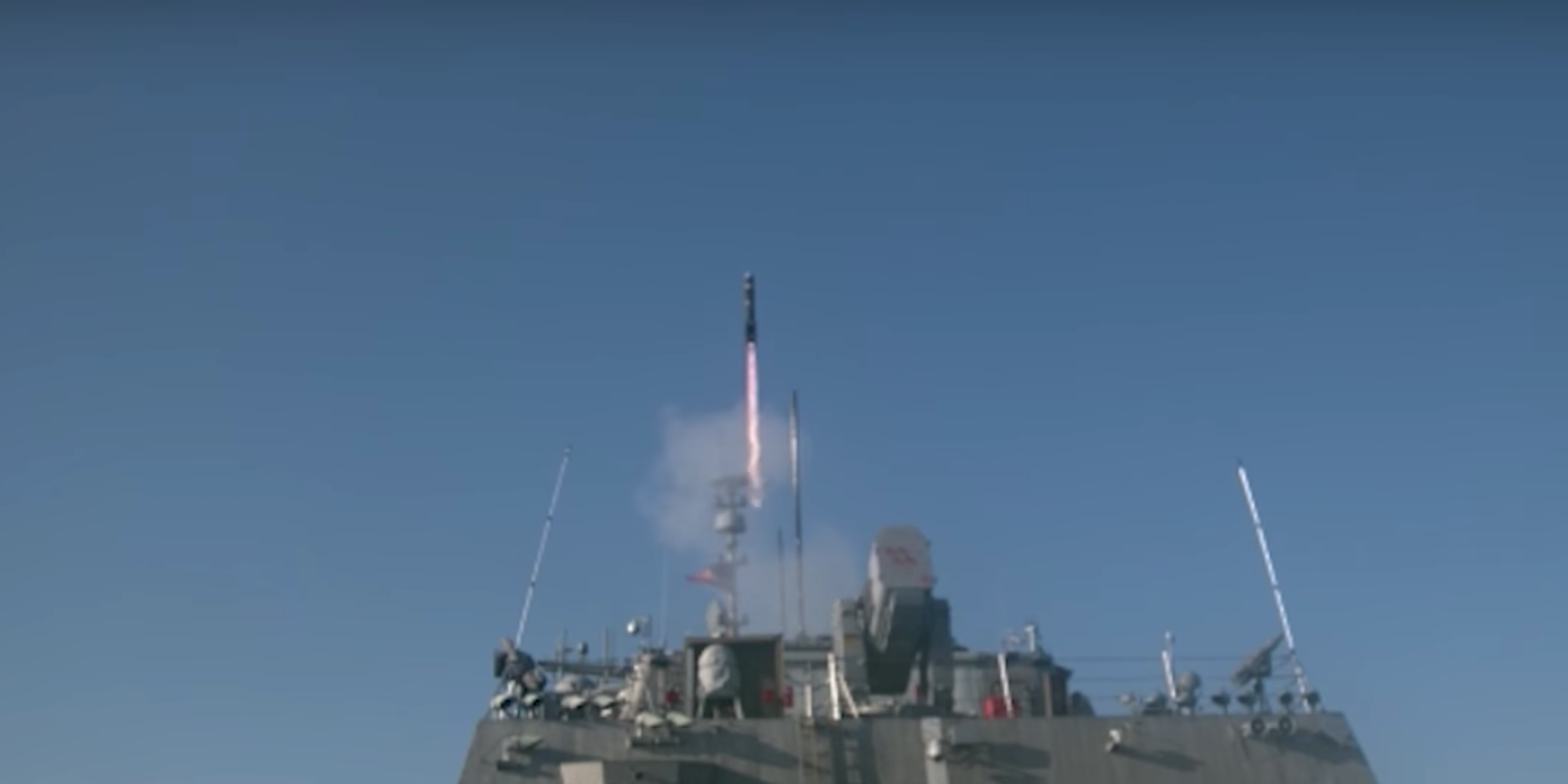- The USS Milwaukee fired four Longbow Hellfire missiles at inshore attack craft targets on May 11, the US Navy announced earlier this week.
- The ship’s crew used radar, simulation, and other means of tracking to locate and identify the targets before firing the missiles.
- Capt. Ted Zobel, a litorral combat ship mission modules program manager, said in a statement that the crew executed the test “superbly” and that “the test team ran the event seamlessly.”
The USS Milwaukee fired four Longbow Hellfire missiles at inshore attack craft targets on May 11, the US Navy announced earlier this week.
This marked the first use of the complete litorral combat ship surface-to-surface mission module, but this was the second time a Hellfire had been fired from a ship at sea.
The ship’s crew executed a scenario emulating a complex warfighting environment and used radar, simulation, and other means of tracking to locate and identify the targets before firing the missiles.
The Navy released a video of the test, which was conducted off the coast of Virginia.
Capt. Ted Zobel, an LCS mission modules program manager, said in a statement that the crew executed the live-fire test "superbly" and that "the test team ran the event seamlessly."
The next phase of the surface-to-surface mission module testing will occur aboard the USS Detroit. The Navy said initial operational capability for the surface-to-surface mission module is expected in 2019.
"The east coast littoral combat team continues to grow and mature with two Freedom variant LCS arriving annually in Mayport. We look forward to conducting the next phase of SSMM testing onboard USS Detroit," said Littoral Combat Ship Squadron Two Capt. Shawn Johnston in a statement.
The Milwaukee is homeported at Naval Station Mayport and is primarily meant to operate in near-shore environments.

